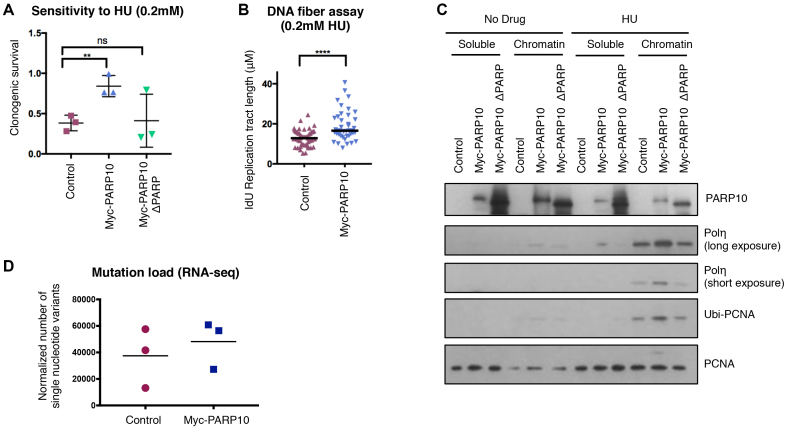Figure 4.
Overexpression of PARP10 in RPE-1 suppresses replication stress and promotes engagement of mutagenic TLS polymerase Polη. (A) Clonogenic assay showing that PARP10-overexpressing RPE-1 cells are resistant to HU. For each cell line, the ratios of HU-treated to non-treated are presented. The mean and standard deviation are shown. (B) DNA fiber combing assay showing increased replication tracts in PARP10-overexpressing RPE-1 cells under HU treatment. Shown is the quantification of the IdU tract length, with the median values marked. (C) Chromatin fractionation experiments showing increased chromatin recruitment of TLS polymerase Polη in PARP10-overexpressing RPE-1 cells following HU treatment (2 mM for 24 h). A repeat experiment, as well as quantification of band intensities are provided in Supplementary Figure S5. (D) Mutation load in control and PARP10-overexpressing RPE-1 cells calculated from RNA-seq data. Three independent clones each were grown for 30 generations in the presence of doxycycline to induce PARP10 expression. The number of point mutations from loci with at least 10 reads was calculated, and normalized against genome coverage. The mean values are shown (P = 0.55).

